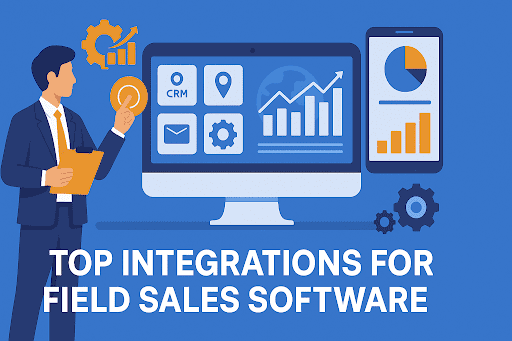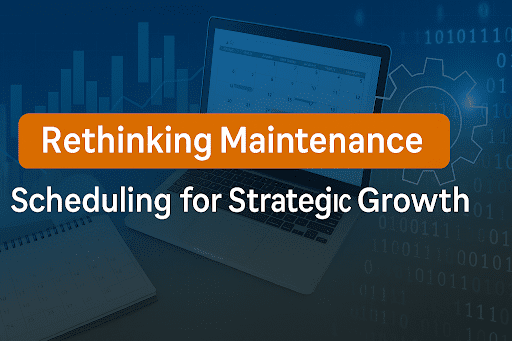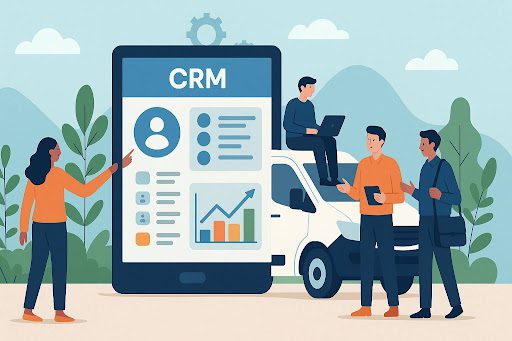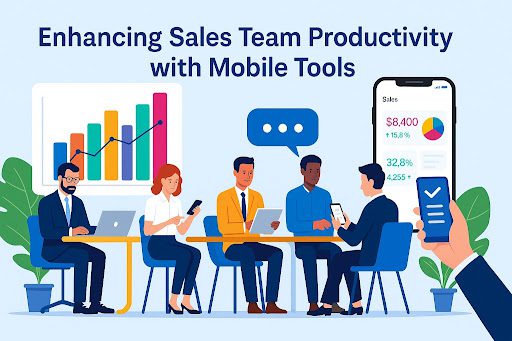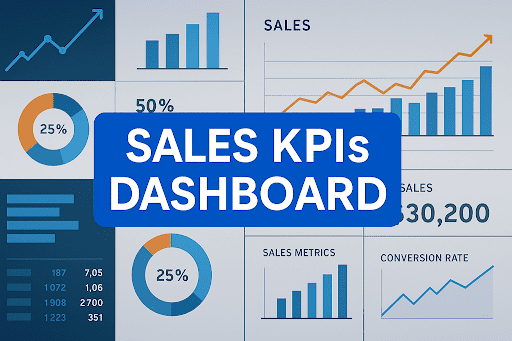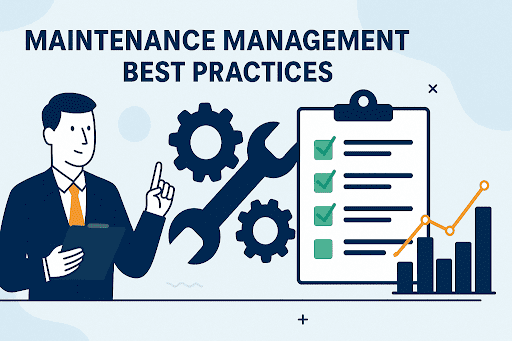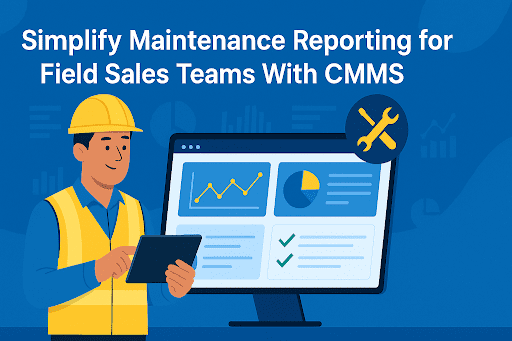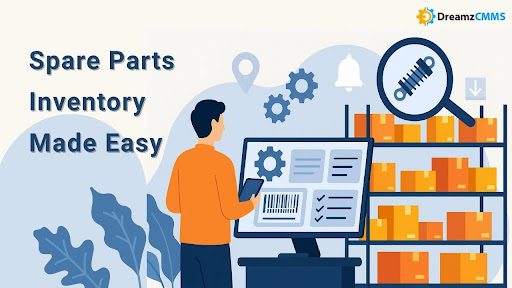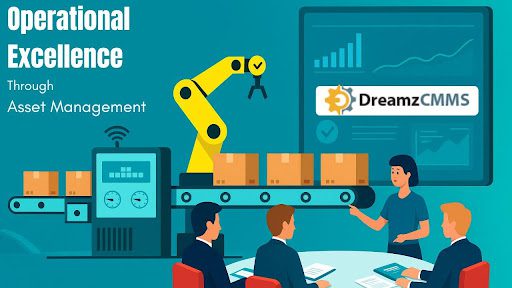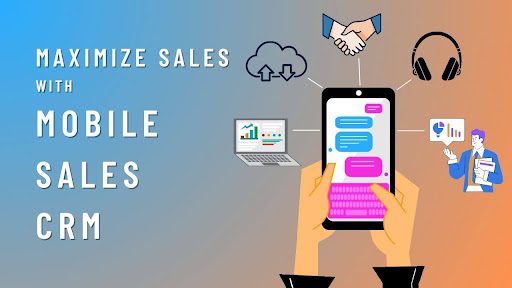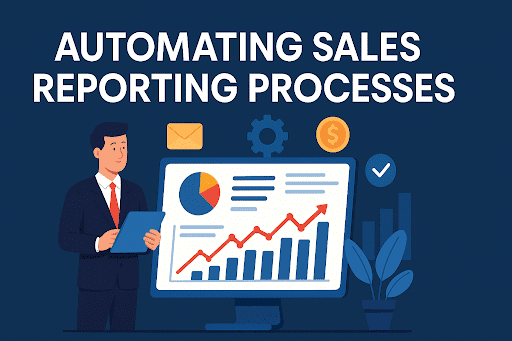 BACK TO Blog
BACK TO Blog
Asset Rental Management
Field Sales
The practice of maintenance management has progressed substantially past basic record-keeping activities. Standard spreadsheets used to function as standard tools but now create more problems than benefits for business operations. Maintenance operations need an Excel replacement that combines real-time data management with predictive analytics together with automated processes. The industry-wide transition to Excel-free maintenance software and specifically CMMS (Computerized Maintenance Management System) brings enhanced data precision together
- July 25, 2025
- DreamzCMMS Team
- 12 minutes read

- July 25, 2025
- DreamzCMMS Team
- 12 minutes read
The practice of maintenance management has progressed substantially past basic record-keeping activities. Standard spreadsheets used to function as standard tools but now create more problems than benefits for business operations. Maintenance operations need an Excel replacement that combines real-time data management with predictive analytics together with automated processes.
The industry-wide transition to Excel-free maintenance software and specifically CMMS (Computerized Maintenance Management System) brings enhanced data precision together with reduced operational downtime and improved efficiency.
This detailed guide examines how Excel has become outdated while discussing effective maintenance spreadsheet options and effective business transitions to intelligent tools.
Start with the Right Maintenance Software
Do you want to advance your maintenance operations past spreadsheet limitations? Your organization should select a robust solution which provides streamlined asset tracking and preventive scheduling together with cost management capabilities.
Asset Maintenance Management Software serves as a smarter method to manage assets and decrease downtime and enhance maintenance precision.
Why Excel is No Longer Reliable for Maintenance Data Tracking
Human Errors and Data Inconsistencies
The manual process of updating spreadsheets makes them vulnerable to human errors that damage the accuracy of maintenance data. Technicians face difficulties because duplicate entries and incorrect formulas along with misplaced rows lead them to rely on wrong information.
No Real-Time Visibility
The maintenance teams require immediate access to maintenance data for both emergency response and preventive task scheduling. Excel files maintained both locally and on shared drives fail to deliver instant updates thus causing operational delays and equipment downtime.
Lack of Automation
Preventive maintenance needs maintenance task automation which spreadsheets do not provide. The manual inspection of asset usage and calendar dates by managers leads to failed preventive maintenance which results in equipment breakdowns.
Limited Analytical Capabilities
The standard graphical features of Excel do not provide the capability to generate predictive analytics or identify root causes or track cost trends. CMMS alongside other contemporary tools automatically tracks KPIs including MTTR (Mean Time to Repair) and MTBF (Mean Time Between Failures).
Security Risks and Version Conflicts
The process of multiple people editing the same spreadsheet results in data loss and overwriting. The unsecured nature of spreadsheets makes them unsuitable for storing sensitive data about maintenance expenses and equipment performance and asset maintenance records.
The current issues show that operations need maintenance tracking solutions which do not rely on Excel for maintaining operational efficiency and competitiveness.
Why Businesses Need an Excel Replacement for Maintenance
Operation complexity has increased to a point where smarter tools are required by modern businesses. Organizations now choose alternative maintenance spreadsheet systems because they provide:
- The maintenance log system works without spreadsheets to generate simple compliance reporting reports
- The system provides real-time maintenance data for making fast and well-informed decisions
- The automation of maintenance data enables workflow optimization in maintenance operations
- Beyond traditional Excel asset management through IoT integration enables predictive analytics capabilities.
Modern industry leaders have stopped debating between CMMS and manual tracking since digital tools represent an essential requirement for operational success.
Best Excel Replacement for Maintenance Data Tracking
Computerized Maintenance Management System (CMMS)
CMMS represents the leading Excel replacement for maintenance operations since it integrates automation features with analytical tools and mobile functionality. Key features include:
- Maintenance task automation enables automatic work order generation in the system
- Technicians can access digital maintenance records through mobile devices for real-time updates of their work.
- The integration of IoT and RFID technologies enhances maintenance data accuracy through improved systems.
- Predictive analytics enables organizations to forecast equipment failures which decreases system downtime.
CMMS integration with Field Service Management Software enables better technician performance through route optimization and shorter response times and improved customer service.
Enterprise Asset Management (EAM)
EAM represents the definitive solution for asset management that extends beyond Excel functionality because it links maintenance tracking with financial operations and compliance requirements.
Predictive Maintenance Platforms
The analysis of current maintenance data through IoT platforms enables the prediction of equipment breakdowns in advance. The system helps decrease urgent maintenance needs while extending equipment.
Key Benefits of Excel-Free Maintenance Software
The transition from Excel to CMMS or other Excel-free maintenance software provides advantages that extend past basic record management.
Higher Data Accuracy
The process of manual spreadsheet updates creates errors which result in incorrect decisions and missed maintenance tasks. The CMMS system performs automated data collection and updates through IoT device integration and maintenance data accuracy tools to maintain precise and reliable asset records.
Improved Efficiency
The automated process saves time for maintenance managers to enable technicians to complete their jobs instead of updating spreadsheets
Cost Savings
Modern maintenance software includes predictive analytics to identify equipment failures before they happen. The preventive maintenance strategy through software helps organizations save money on expensive emergency repairs while minimizing spare parts waste to show better ROI compared to, and the ROI on software maintenance systems over Excel.
Regulatory Compliance
The digital maintenance records system facilitates audit and regulatory check procedures by streamlining documentation processes. The CMMS system stores a secure historical record of all inspections, repairs, and asset updates with timestamped entries to to allow businesses meet regulatory standards effortlessly.
Faster Decision-Making
The current real-time dashboards allow teams to instantly view asset health status alongside downtime and maintenance KPIs. Managers obtain real-time maintenance data to make fast decisions that result in better asset reliability and operational uptime.
Moving to a dependable Excel replacement for maintenance allows organizations to achieve operational control and transition from reactive to proactive data-driven maintenance strategies.
CMMS vs Excel: Why It’s Time to Upgrade
A centralized cloud-based system using CMMS differs from spreadsheets because data accessibility exists across every location. The system offers both predictive analytics and advanced reporting and seamless integration capabilities thatURNS users lack in Excel. Excel-free maintenance software stands as the new trend for manufacturing industries and healthcare facilities and retail sectors.
Industries Transitioning from Excel
Manufacturing
The implementation of CMMS systems at factories enables monitoring machine performance which leads to decreased downtime and increased production capabilities that prove asset management surpasses Excel capabilities.
Healthcare
Hospitals rangнls Current software systems maintain healthcare facilities since equipment compliance requirements and safety protocols demand precise data accuracy.
Facilities Management
Facility Management Software enables organizations to maintain HVAC systems along with lighting and utility infrastructure through sustainable solutions that also maintain regulatory compliance.
Retail & Warehousing
With the help of RFID digital record management, warehouse operations track equipment health to minimize delays in order completion. Warehouse management solutions utilize RFID digital record management to track their equipment health and this process reduces order fulfillment delays.
Transitioning from Excel to CMMS: A Step-by-Step Guide
A well-structured approach will guide you through the change process when you move from spreadsheets to CMMS systems. Therog Andeus for effective migration from manual tracking systems to automated Excel-free maintenance software presents itself in five stages.
1. Audit Existing Spreadsheets
Review the existing maintenance records before you start to improve them. Eliminate the progresss from your data storage by removing duplicates then address all errors followed by categorization of assets and work orders and spare parts. The structured data set enables a successful migration process to stop old spreadsheet errors from appearing in the new systemitemink_REFed data.
2. Choose the Right Tool
All maintenance software systems do not provide identical functions. Business organizations use CMMS instead of Excel because CMMS systems offer scalable maintenance management and automated work order scheduling with superior through advance analytics.
3. Bulk Import Data
Business entities need to evaluate their operational requirements and integration needs as well as budget constraints before selecting a maintenance solution.
The use of bulk import functions exists in most modern CMMS platforms for simple Excel data migration.
Systems uselicable will enable faster imports to make data entry easier during setup which leads to proper first-day digital maintenance record accuracy.
4. Train Staff
All parties depend on the way users feel about technology. Your team and managers must have training about effective asance to master system functions so they. Present training on the new software features related to maintenance data automation and mobile updates and the display of thereal-time reporting will increase system utilization among employees.
5. Monitor KPIs for ROI
After implementation, track maintenance KPIs such as downtime reduction, Mean Time to Repair (MTTR), and cost savings on a continuous basis. These metrics demonstrate the ROI of upgrading to Excel-free maintenance software and help refine workflows for better efficiency.
The implementation of CMMS represents more than a software transition because it leads organizations toward predictive data-based maintenance which enhances productivity and asset reliability.
Maintenance and Business Integration: A Connected Approach
Modern maintenance serves as an integrated strategic business component that merges with other essential operational functions. Equipment health together with maintenance schedules and asset performance directly influence customer service delivery as well as sales performance and operational productivity in data-driven business operations.
The independent operation of maintenance teams creates challenges for sales teams who need timely equipment availability information which results in missed sales opportunities and dissatisfied customers. A connected ecosystem develops through implementing CMMS alongside digital business tools to replace Excel systems which drives efficiency and collaboration between departments.
Enhancing Sales and Maintenance Coordination
Modern maintenance systems deliver real-time maintenance data sharing capabilities that enable better coordination between customer-facing teams. Field Sales Software provides sales teams with real-time access to machinery or equipment status information which helps them decide on client orders. The promise of only operational assets that receive proper maintenance to customers leads to both better service reliability and decreased delays.
The automatic syncing of maintenance updates about asset availability and downtime schedules and spare parts status enables sales and maintenance departments to access identical accurate information.
Seamless Communication Between Teams
The efficient exchange of information between field sales representatives and technicians remains essential in fields where maintenance activities directly affect client business operations. Mobile Sales CRM establishes real-time messaging and automated alerts while allowing users to quickly share maintenance reports thus bridging the communication gap. The instant notification system between technicians and sales teams enables them to reschedule service commitments or find alternative solutions for customers during equipment repair situations.
This level of coordination reduces miscommunication, boosts customer satisfaction, and positions the company as proactive and reliable.
Predictive Resource Planning for Better Asset Utilization
Maintenance activities directly relate to both demand prediction and resource distribution processes. The integration of Sales Forecasting Tools enables businesses to forecast equipment usage levels so they can schedule preventive maintenance in advance. Maintenance teams use forecasted equipment rental or seasonal product demand increases to perform inspections and operational checks on all critical assets before the surge in demand.
Predictive resource planning enables organizations to avoid emergency repairs during peak business times while optimizing technician and spare part deployments.
Data-Driven Insights for Smarter Decision-Making
The unified operation of sales and maintenance functions provides organizations with enhanced business intelligence capabilities. Field Sales Insights generates valuable information about asset customer demand patterns and their maintenance requirements and preferred maintenance schedule frequencies. Maintenance managers use available information to enhance their maintenance cycles and prioritize assets with high demand and propose equipment upgrades which match current sales patterns.
Building a Unified, Connected Ecosystem
Moving to an Excel replacement for maintenance goes beyond efficiency improvements since it enables the creation of a connected data-driven system which unifies all departments. Organizations that link their maintenance operations with sales and service and inventory functions achieve improved results in:
- Better customer satisfaction through reliable service delivery
- Improved asset utilization and higher ROI
- Faster response to market changes due to integrated forecasting and resource planning
- Enhanced transparency and accountability across departments
A connected approach dismantles departmental barriers to establish a workflow that provides real-time accurate data benefits all teams.
Real-World Case Study
The implementation of CMMS by a medium-sized manufacturing firm led to exceptional results within six months of spreadsheet system replacement.
- 40% increase in preventive maintenance compliance
- 30% reduction in equipment downtime using maintenance task automation
- The implementation of real-time inventory tracking eliminated spare parts stockouts entirely.
Moving from spreadsheets to Excel-free maintenance software generates quantifiable ROI whereas sticking to traditional spreadsheets results in higher long-term costs.
The Future of Maintenance Data Tracking
Maintenance operations in the upcoming era will depend on predictive methods together with autonomous systems. The implementation of IoT devices will provide ongoing real-time maintenance data which AI systems will utilize to generate automated maintenance schedules and priority assignments. Organizations that keep using Excel will become obsolete while competitors who adopt asset management systems beyond Excel together with predictive maintenance technologies advance forward.
Final Thoughts
Excel served as a basic maintenance tracking system during its time but it no longer functions effectively for contemporary data-based operations. The fundamental limitations of manual spreadsheets include absent real-time monitoring and automatic capabilities and predictive analysis which are necessary for boosting operational performance and asset dependability.
A CMMS system provides the necessary maintenance management solution for businesses which want to reduce costs and minimize downtime while increasing operational performance. CMMS provides real-time maintenance data along with automated tasks and predictive capabilities which helps organizations transition from reactive to proactive maintenance approaches for better asset longevity and operational sustainability.
A transition to Excel-free maintenance software enables teams to share accurate data between departments which results in better collaboration across the organization. Businesses that adopt modern integrated systems after discarding spreadsheets will achieve better competitiveness and operational efficiency in the future of maintenance operations.
Switch to CMMS and Replace Excel Today
The practice of using outdated spreadsheets for maintenance tracking should be discontinued. Businesses should implement intelligent automated systems to enhance precision while decreasing equipment downtime and extending asset operational life.
Ready for More?
Talk to one of our CMMS experts and see how DreamzCMMS can simplify your maintenance operations.
Book a free consultation